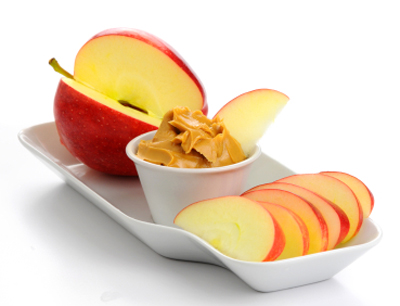By Kati Mora, MS, RD
There has been lots of debate over snacking as of late. Is it good for you? Is it not? Really, it could go either way. And although a lot of attention has been focused on what a quote-on-quote healthy snack looks like, we should probably take a look at an unhealthy snack so that we are able to know the difference. After all, if you can’t identify a snack that you shouldn’t eat, how will you know to stay away from it? 
To identify an unhealthy snack, you might notice the following qualities:
It is Loaded With Calories. If your snack has as many calories as a meal, it is probably not your best bet. In fact, a snack with approximately 150 to 200 calories should be sufficient to hold off hunger and give you a little nutrient boost if needed. Be sure to always take a look at the nutrient label of the food you’re packing or grabbing while on the go. If it doesn’t have a label, just remember to keep the portion sizes relatively small and to listen to your own hunger cues to determine how much of the snack you actually need to eat to satisfy your hunger.
It is Void of Protein and Fiber. What are the ingredients in your snack? Protein and fiber are two nutrients that should definitely be there. Why? Without them, it is doubtful that your snack will keep you feeling full for very long. This means that you might be more likely to grab additional snacks or treats throughout the day. Depending on where you are at when hunger strikes, you might be vulnerable to those less-than-healthy foods that are common place in break rooms, vending machines, convenience stores, or restaurants that you might pass by.
It is Found Everywhere. Have you ever noticed that when hunger strikes, it is often easier to find less-healthy choices than it is to find those that are really good for you? If the snack you are considering can be found just about anywhere, you may want to reconsider. Instead, pack a healthy snack from home that can’t be found anywhere other than in your purse, lunch bag, or desk. If you pack it, it is likely that you will have better control over your own snacking situation. Don’t let convenience dictate your snacking choices.
It Comes in a Plastic Wrapper. Another great rule of thumb when it comes to snacking is to try and make those pre-packaged snacks your last choice when looking for a healthy option to nosh on. Instead, consider nature’s original fast foods first – fresh fruits and vegetables! Although not all pre-packaged foods are necessarily a poor choice, many are laden with extra sugar, sodium, or fat to enhance flavor and shelf life. If vending machine fare is really your only option, look for fruit and nut based trail mixes, small bags of peanuts or almonds, sunflower seed packets, or even high fiber snack bars. These are all decent options that can help quelch hunger without causing your meal plan to go completely off track.
Snacking can be a lot of fun and essential for many to get the nutrients they need to live their healthiest. Of course, it all comes down to what sort of snacks you are choosing to incorporate into your day. Keep it small, keep it simple, and keep it close by.
Also Read:
The Facts on 100-Calorie Snacks
